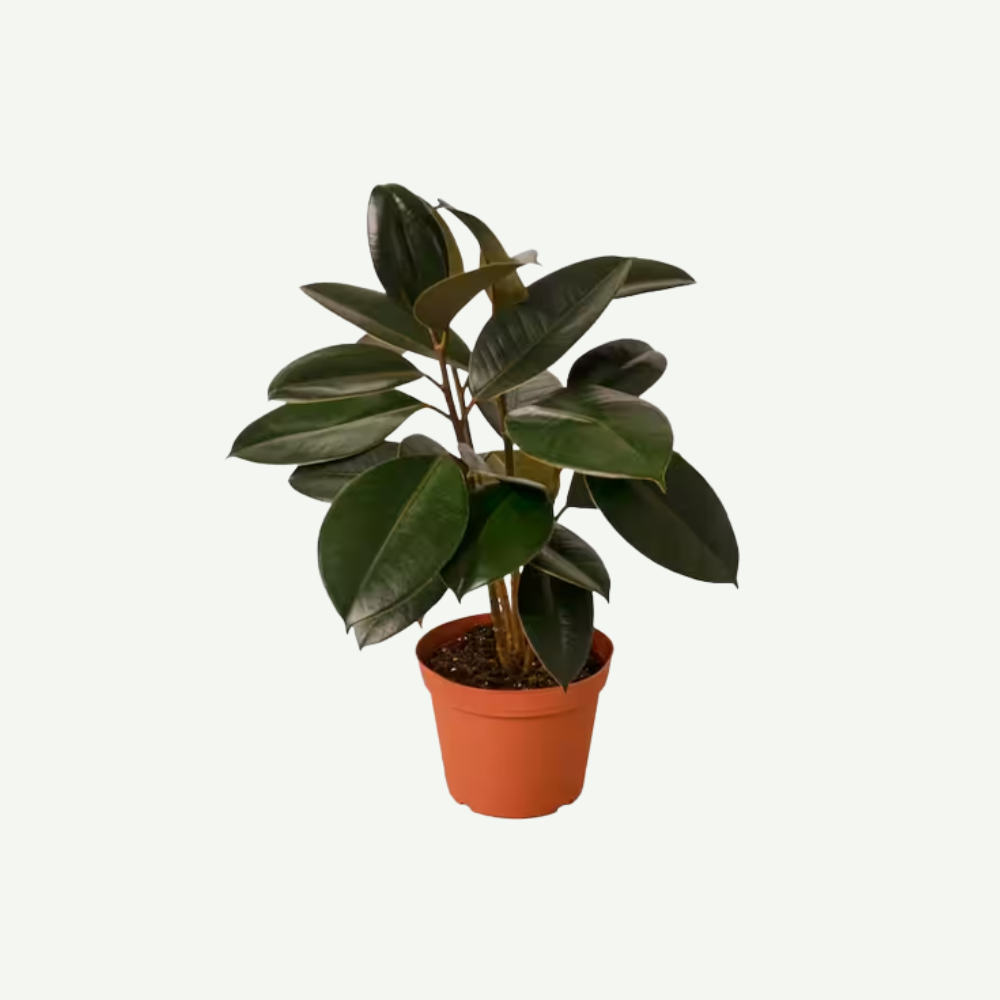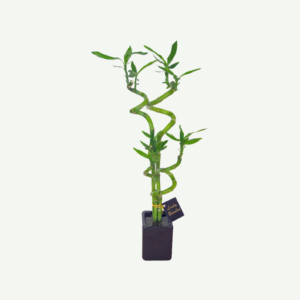Rubber Plant, scientifically known as Ficus elastica, is a popular and attractive indoor houseplant from the Moraceae family. Native to Southeast Asia, the Rubber Plant is highly valued for its large, glossy leaves and its air-purifying properties, making it a favorite choice for interior decoration in homes, offices, and other indoor spaces.
Care of Rubber Plant:
Light: These Plants prefer bright, indirect light. They can tolerate lower light conditions but will grow best in bright light. Avoid exposing them to direct sunlight for extended periods, as this can cause leaf burn.
Temperature: These Plants thrive in average room temperatures between 65°F to 80°F (18°C to 27°C). They can tolerate slightly cooler temperatures but should be protected from frost and cold drafts.
Watering: Allow the top inch of the soil to dry out before watering again. These Plants prefer slightly moist soil but can tolerate some drying out between waterings. Overwatering can lead to root rot, so it’s important to avoid waterlogged soil.
Humidity: These Plants are adaptable to average indoor humidity levels. They can handle moderate humidity but appreciate occasional misting or placement near a humidity tray.
Soil: A well-draining and nutrient-rich potting mix formulated for indoor plants or tropical foliage plants is suitable for these Plants.
Fertilization: Fertilize these Plants every 4-6 weeks during the active growing season (spring and summer) with a balanced, diluted liquid fertilizer. Reduce or stop fertilization during the winter months when the plant is dormant.
Characteristics of Rubber Plants:
Leaves: The most distinguishing feature of the this Plant is its large, thick, and leathery leaves. The leaves are typically dark green and have a shiny, glossy appearance. New leaves are often reddish or bronze in color, adding to the plant’s visual interest.
Growth Habit: These Plants have an upright growth habit with a single, sturdy stem that can become woody as the plant matures. The plant can grow quite tall, reaching heights of 6 to 10 feet (1.8 to 3 meters) or even more, depending on the variety and care provided.
Aerial Roots: These Plants may develop aerial roots from their stems. These roots are normal and serve to provide additional support to the plant.
Flowers and Fruits: In their natural habitat, Rubber Plants can produce small, inconspicuous flowers and small fig-like fruits. However, these features are rarely seen when grown as indoor houseplants, and the plant is primarily cultivated for its foliage.
Landscape Use of Rubber Plant:
Shaded Garden Beds: In regions with a mild or tropical climate, you can plant rubber plants in shaded or partially shaded garden beds. Their large, attractive leaves can add a touch of lushness and sophistication to shaded garden areas.
Understory Plant: In gardens with taller trees or shrubs, rubber plants can be used as understory plants. They thrive in filtered light conditions beneath taller vegetation, contributing to the tropical and exotic feel of the garden.
Container Gardens: Plant rubber plants in large pots or decorative containers to place on patios, decks, or in courtyard gardens. Their impressive foliage makes them an eye-catching focal point in outdoor living spaces.
Accent Plant: Use these plants as accent plants in garden beds, along walkways, or near water features. Their unique and elegant leaves can draw attention and add a touch of beauty to the landscape.
Indoor/Outdoor Transition Areas: Place these plants in covered outdoor spaces like verandas or screened-in porches, where they can thrive in a sheltered environment while providing a bridge between the indoor and outdoor living areas.
Educational Gardens: These plants can be used in botanical gardens, public parks, or educational institutions to educate visitors about the diversity of plant species and to showcase their striking appearance and adaptability.
When incorporating these plants into landscape or garden designs, it’s essential to consider the local climate. While they can thrive outdoors in mild and tropical regions, they are not suitable for areas with frost or extreme cold. Ensure that the planting area has well-draining soil and provides protection from strong winds and excessive sun exposure, as rubber plants prefer indirect or dappled light and can be sensitive to harsh conditions.






